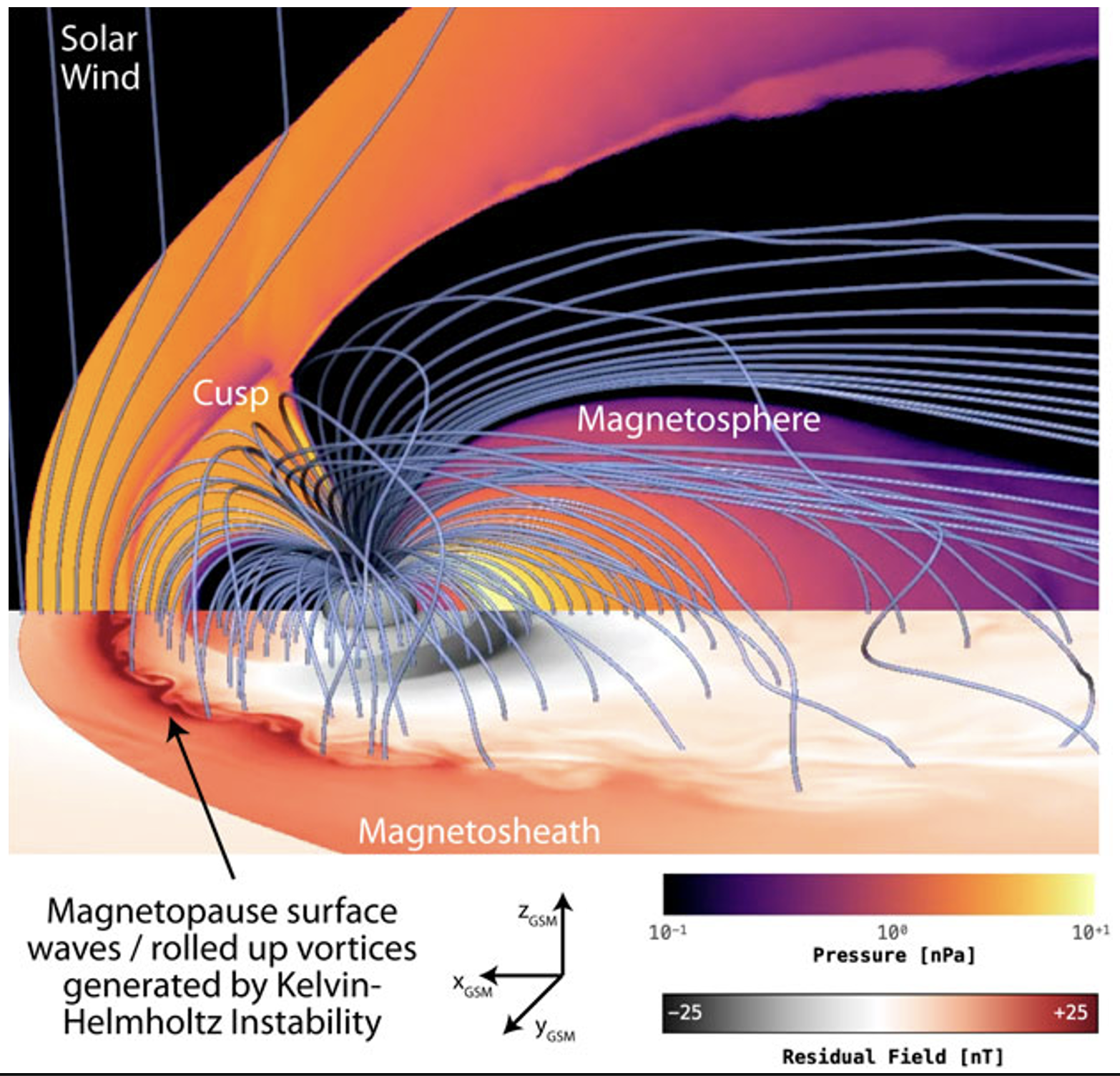Description
In Fluids III you learnt about two key incompressible fluid instabilitites: the Rayleigh Taylor instability (RTI) and the Kelvin Helmholtz instability (KHI). Both occur in the world around us, but what about in space? Well in space we are mostly dealing with plasmas rather than pure fluids. And to model their behaviours we can use the equations of Magnetohydrodynamics (MHD), which are a coupling of electromagnetism and Navier-Stokes. The good news, however, is that the methods and much of the intuition you gained when studying these instabilitites carries over to their MHD counterparts.
Some nice examples include Rayleigh-Taylor plasma fingers forming in solar prominces and Kelvin-Helmholtz vortices forming on the flanks of Earth's Magnetosphere (see figure) and eruptions from the Sun. The key new feature in plasmas is that the magnetic field can act like a string threading the plasma, supporting new wave modes but also stabilising certain modes of instability.
 MHD simulation showing the KHI forming on the flanks of Earth's magnetopshere as the solar wind streams past it (from Archer et al. 2024).
MHD simulation showing the KHI forming on the flanks of Earth's magnetopshere as the solar wind streams past it (from Archer et al. 2024).
This project will further explore the RTI and KHI in the context of plasmas. We will begin by reviewing the MHD equations and deriving the basic wave modes supported by a uniform magnetic field (Alfvén waves, slow and fast accoustic waves). We will then review the classic literature to identify new effects that can be introduced to go beyond the linear analysis covered in Fluids III based on your interests. Some options could be including a uniform or sheared magnetic field, compressibility, or a finite thickness of boundary layer. If there's time we could also consider the resistive tearing instability, which is a purely MHD instability that has some parallels with Kelvin-Helmholtz in pure fluids.
Prerequisites
Fluid Mechanics III is essential. PDEs III would also be useful (but not essential). It is strongly recommended that you take Geophysical and Astrophysical Fluids alongside this project (which introduces MHD and MHD waves in the second term). Some basic python skills would be useful to plot the dispersion relations and modes.
Resources
There are many textbooks and lecture notes online covering MHD waves. A nice one can be found here. A classic textbook showing how to find the dispersion relation of the RTI and KHI with a uniform field is Chandrasekar 1961, which will form part of your reading. There are many papers looking at specific generalisations of the KHI and RTI beyond this. To give you an idea, an example of a more recent paper looking at the KHI in relativistic MHD in a current-vortex sheet (B-field and flow field reversal) is Osmanov et al. 2008.